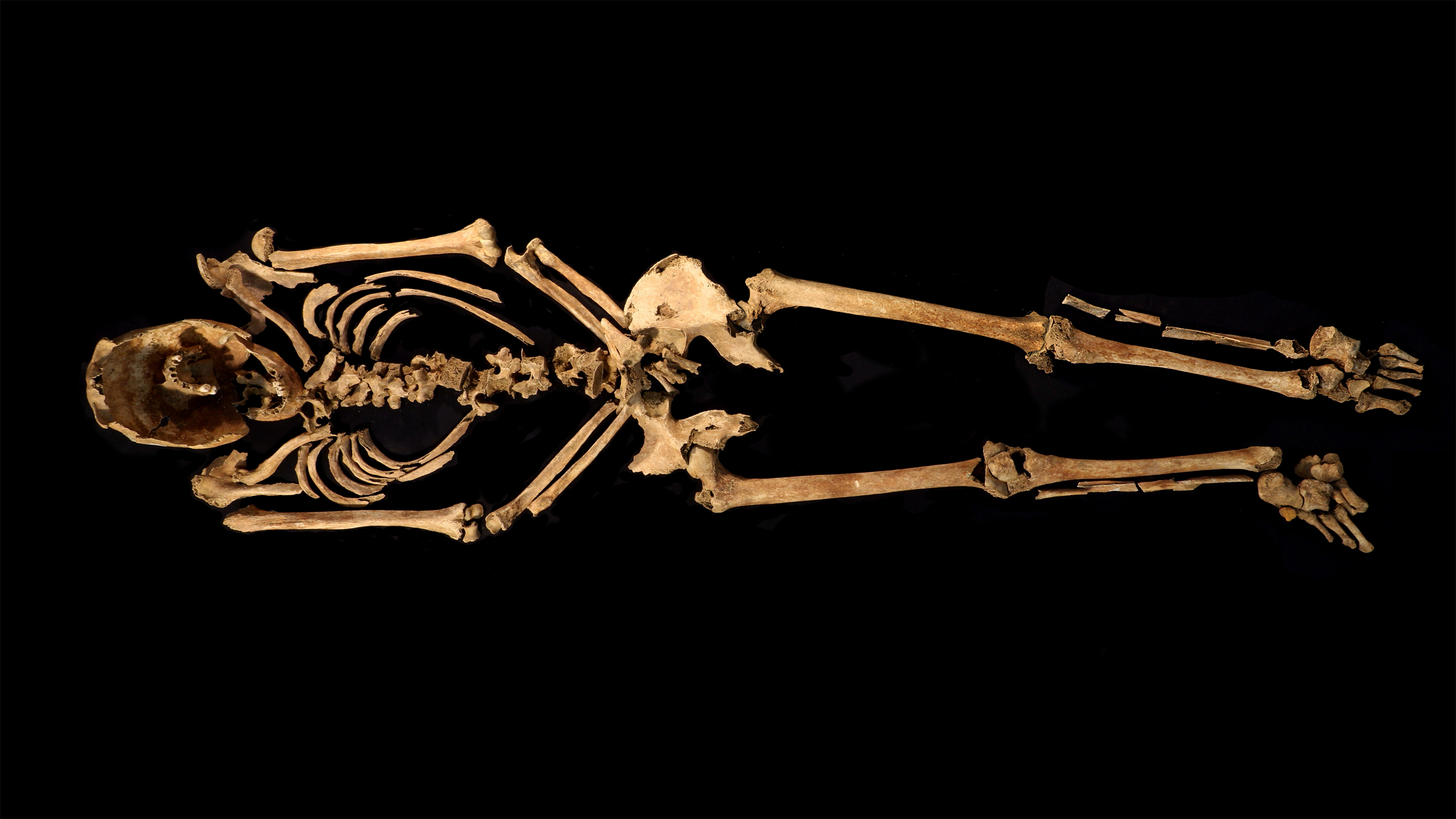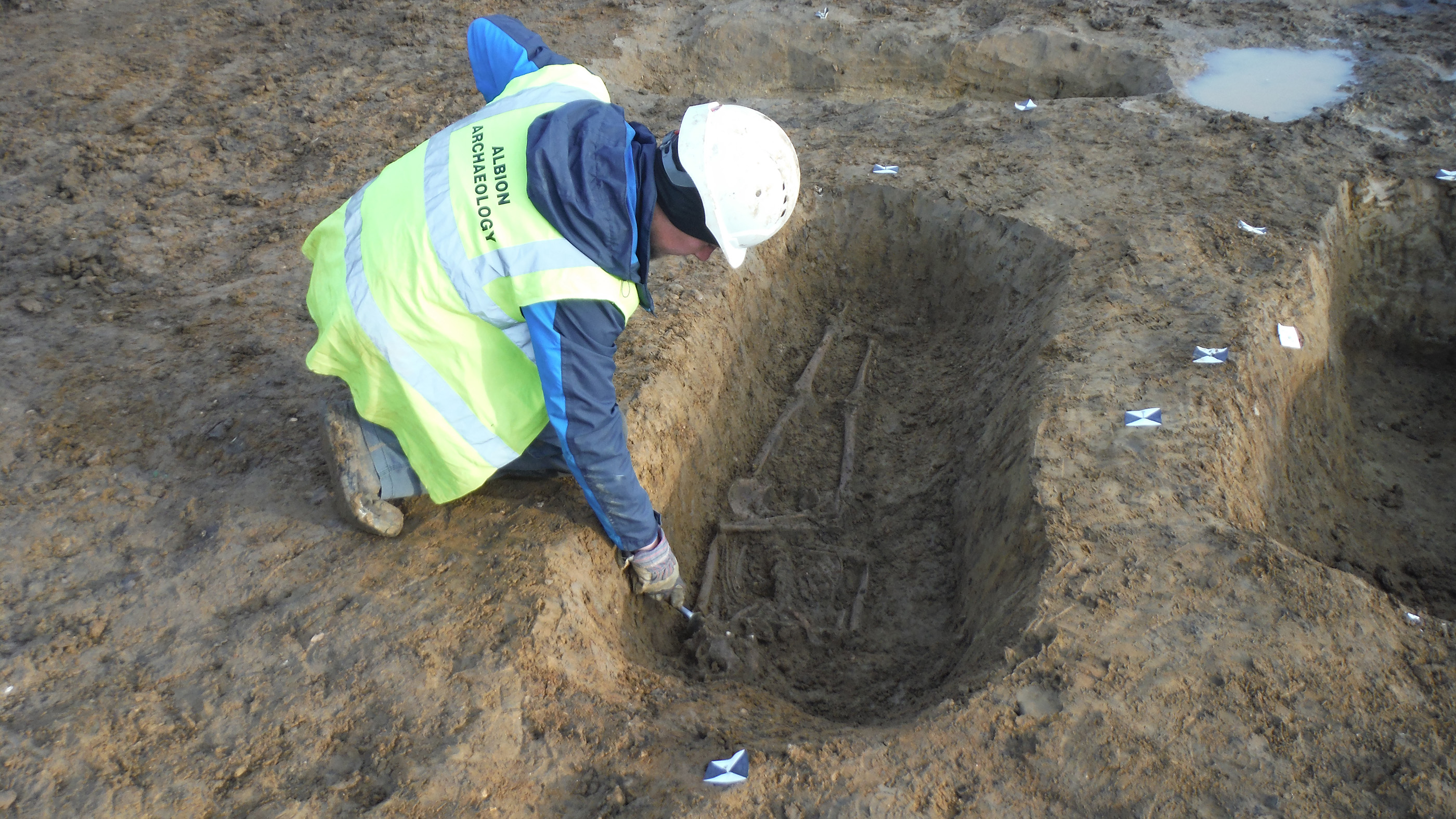Rare evidence of Roman crucifixion uncovered in the UK
A nail was found hammered into one of the heel bones of this crucified skeleton.

A man in Roman England, possibly a slave, died brutally when he was crucified in the third or fourth century A.D., according to the archaeologists who found his remains, including a nail hammered through one of his heel bones.
The man, who died between the ages of 25 and 35, had thinning in his leg bones, indicating that he had been "chained to a wall" for a long time before his crucifixion, said David Ingham, a project manager at Albion Archaeology in England who led the excavation of the remains. "[We] think he was one of [the] local native population."
Archaeologists found the man's battered skeleton in a cemetery containing the graves of 48 people, whose remains showed signs that they engaged in hard manual labor. Nearby, the team found a workshop of sorts, where animal bones were split so that marrow — which was used to make soap, among other things — could be extracted.
Related: In photos: Well-preserved Roman villa found beneath UK home
Ingham's team conducted the excavations before a housing development was built in the area in Cambridgeshire. They published the findings on Wednesday (Dec. 8) in British Archaeology magazine.
It's possible that the crucified man, along with other people buried in the cemetery, were enslaved, Ingham told Live Science. He noted that in A.D. 212, Roman citizenship was extended to all free people who lived in the Roman Empire and that crucifixion was generally not performed on Roman citizens.



During the man's crucifixion, his arms would have been tied to a cross, with his feet nailed to the ground. This position would have made it hard to breathe, and he would have suffocated, Ingham said. Even for an enslaved person, crucifixion was reserved for "one of the most serious crimes," such as rebellion or treason against the state, Ingham said.
Sign up for the Live Science daily newsletter now
Get the world’s most fascinating discoveries delivered straight to your inbox.
This discovery is one of just a few examples of a crucified person being found from the Roman Empire, Ingham said. Another example, discovered in 1968, was unearthed in a first-century tomb in Jerusalem.
The practice of crucifixion is thought to have begun with the Assyrians and Babylonians and it was also used by the Persians in the sixth century B.C., when victims were tied to trees or posts; crosses weren't used until Roman times, Live Science previously reported. Roman Emperor Constantine I abolished the practice in the fourth century A.D., according to a 2003 report in the South African Medical Journal.
The analysis of the skeleton was conducted by Corinne Duhig, a senior fellow of the McDonald Institute for Archaeological Research at the University of Cambridge.
Originally published on Live Science.

Owen Jarus is a regular contributor to Live Science who writes about archaeology and humans' past. He has also written for The Independent (UK), The Canadian Press (CP) and The Associated Press (AP), among others. Owen has a bachelor of arts degree from the University of Toronto and a journalism degree from Ryerson University.









